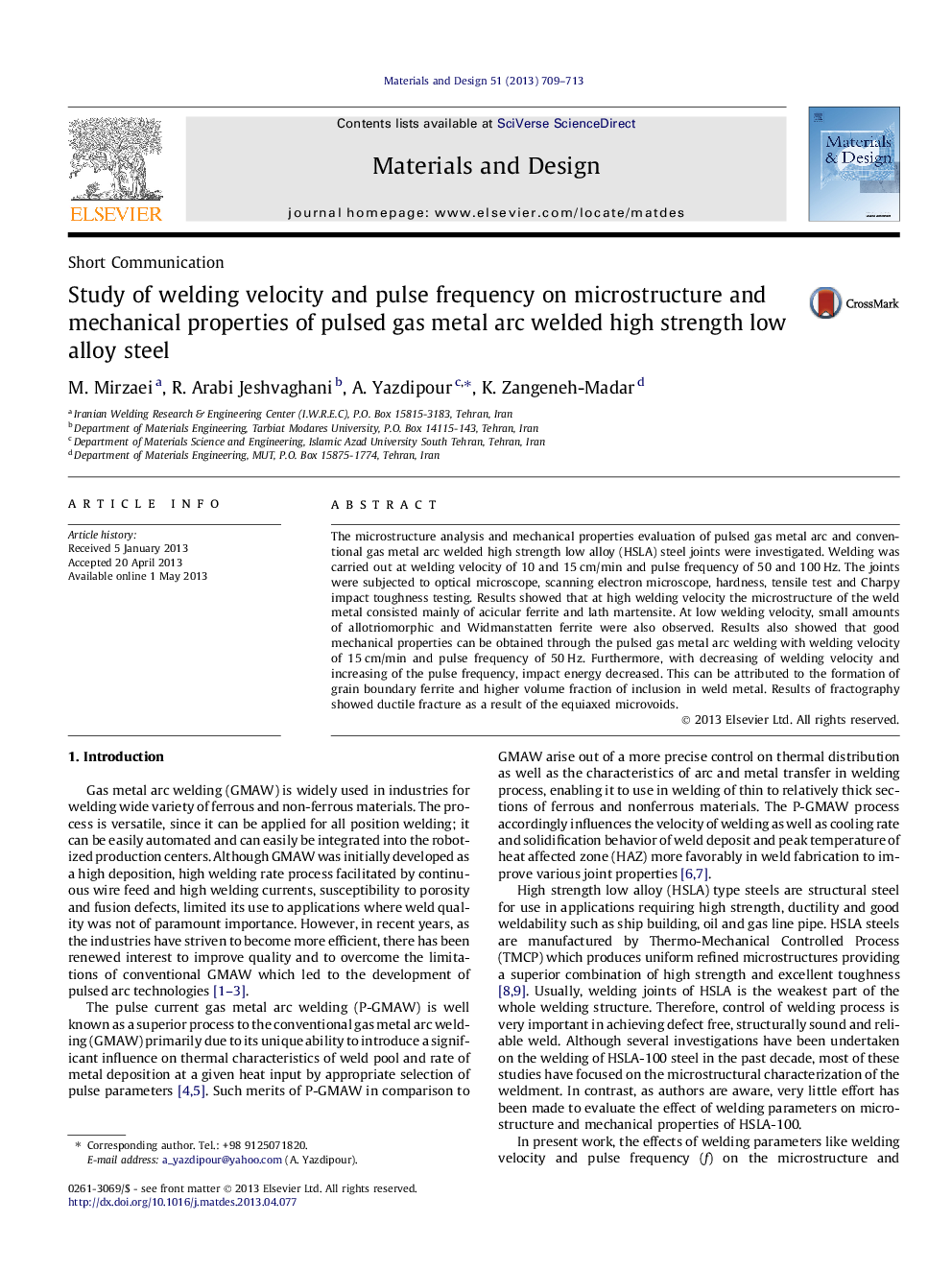| Article ID | Journal | Published Year | Pages | File Type |
|---|---|---|---|---|
| 829892 | Materials & Design (1980-2015) | 2013 | 5 Pages |
•Effect of welding velocity and pulse frequency in GMAW of HSLA steel.•Dependency of weldment microstructure on the welding velocity and pulse.•Reduction of hardness in the weld zone and HAZ with increasing of heat input.•The higher strength due to the higher amount of martensite.•Deterioration of impact properties with formation of grain boundary ferrite.
The microstructure analysis and mechanical properties evaluation of pulsed gas metal arc and conventional gas metal arc welded high strength low alloy (HSLA) steel joints were investigated. Welding was carried out at welding velocity of 10 and 15 cm/min and pulse frequency of 50 and 100 Hz. The joints were subjected to optical microscope, scanning electron microscope, hardness, tensile test and Charpy impact toughness testing. Results showed that at high welding velocity the microstructure of the weld metal consisted mainly of acicular ferrite and lath martensite. At low welding velocity, small amounts of allotriomorphic and Widmanstatten ferrite were also observed. Results also showed that good mechanical properties can be obtained through the pulsed gas metal arc welding with welding velocity of 15 cm/min and pulse frequency of 50 Hz. Furthermore, with decreasing of welding velocity and increasing of the pulse frequency, impact energy decreased. This can be attributed to the formation of grain boundary ferrite and higher volume fraction of inclusion in weld metal. Results of fractography showed ductile fracture as a result of the equiaxed microvoids.
